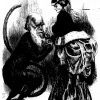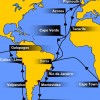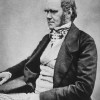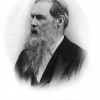
Kathleen Frederickson, “British Writers on Population, Infrastructure, and the Great Indian Famine of 1876-8”
This article examines British writing about the 1876-8 famine in southern and western India. In British newspapers and journals, the turn to thinking about famine in terms of the total population obscured the extreme variations in food access that worsened with rising economic inequality. When the British press in the late-1870s turned to human causes of famine, they either argued that India’s population overburdened India’s land, or suggested that more rail construction would prevent enough deaths sufficiently to mitigate British responsibility for famine conditions. The turn to population-based arguments helped either to perpetuate the belief that famine was a quasi-natural part of India or to parse the sudden increase in the frequency and severity famines in India under British rule.

Jonathan Smith, “The Huxley-Wilberforce ‘Debate’ on Evolution, 30 June 1860”
The “debate” over evolution between T. H. Huxley and Bishop Samuel Wilberforce at the 1860 meeting of the British Association for the Advancement of Science in Oxford is an iconic story in the history of evolution and, indeed, in the history of the conflict between science and religion, second only to Galileo’s troubles with the Vatican. Huxley, the traditional account has it, vanquished Wilberforce by responding to an insulting question about his own ancestry with a masterful rejoinder that exposed the Bishop’s ignorance of science and ungentlemanly behavior. Historians have shown that this traditional account is biased and distorted, a construction many years after the fact by the Darwinians and their allies, yet it continues to live on, even in literary studies. Reconstructing the Huxley-Wilberforce encounter, the contexts in which it took place and what is and is not known about it, yields an understanding of the relationship between religion and science in the Victorian period that is fuller and more complex than the traditional “conflict” model.

Ian Duncan, “On Charles Darwin and the Voyage of the Beagle”
The event now known as “the voyage of the Beagle” comprises Charles Darwin’s circumnavigation as ship’s naturalist on the second of three surveying voyages by H.M.S. Beagle; the writings published as his first book, the Journal of Researches; and the genesis of his theory of evolution by natural selection. Writing between regimes of world-knowledge, Darwin mediates scientific observation through the language of aesthetics, and seeks to understand the convergence of disparate scales of geological and human history.

Cannon Schmitt, “On the Publication of Charles Darwin’s On the Origin of Species, 1859″
The publication of Charles Darwin’s On the Origin of Species (1859) often serves as shorthand for the first appearance of evolutionary theory. But Darwin wrote at a time when several different theories of evolution had already been proposed. Moreover, his own version of evolution had been known to select colleagues well before 1859 and became available to a wider public in 1858. Appreciating the nature of Darwin’s contribution and the extent of his success requires understanding this contemporary context as well as something of the subsequent fate of the Origin’s key idea: natural selection.

Peter Melville Logan, “On Culture: Edward B. Tylor’s Primitive Culture, 1871″
Edward B. Tylor’s Primitive Culture articulates one of two major theories of culture to emerge around 1870. His theory defines culture in descriptive terms as the “complex whole” that makes up social ideas and institutions, and in this it helped to establish anthropology as a recognized science. Tylor’s ideas were closely related to those published about the same time by Matthew Arnold, who defined culture as a humanist ideal that society should strive for.
